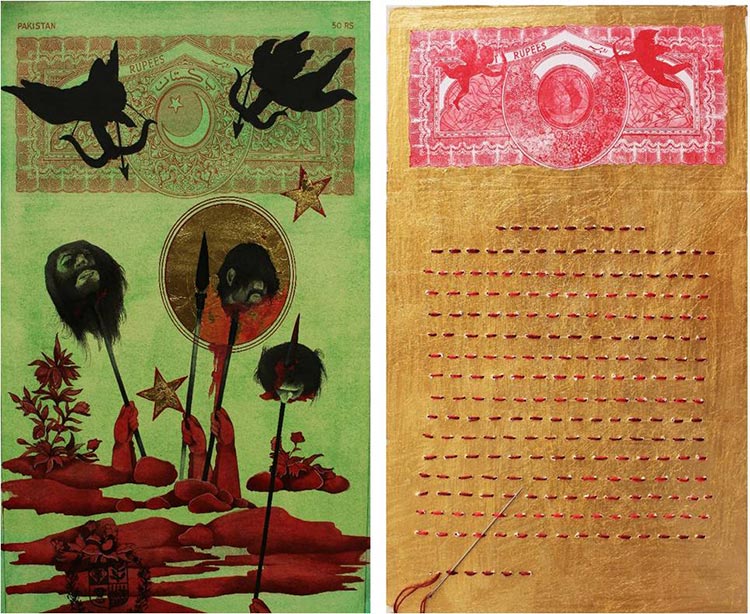Written by: Jovita Alvares
Posted on: September 19, 2018 |  | 中文
| 中文
Known by academics as ‘the poet of the East,’ Iqbal’s poetry highlighted the oppression of colonial engagements, and his revolutionary writing awakened the Muslims of the world. Taking cue, Ahmed’s finely executed paintings depict the dismal situation of Pakistan, in the hopes of reinvigorating a change in the problematic systems.
National College of Arts alum, Ahmed displayed an oeuvre of intimate pieces, each one presented as a diptych. As the title suggests, each section of the diptych is in conversation with the other; while the poem Shikwa accused God of not fulfilling his promises, Jawab-e- Shikwa was God’s disagreement to their claim, saying it was, in fact, the Muslims who strayed from the path and therefore, His protection. The diptychs, in turn, become cyclical colloquies, creating a cause-and-effect scenario in each painting, as they either compliment or contradict each other.
Ahmed’s paintings are far from subtle. Using strong imageries of war, mutilation and weaponry, as well as symbols of five-pointed stars and crescents from the national flag, her works speak of the helplessness of the dismembered nation, separating itself by caste and creed and thereby, feeding its own destruction. In other paintings, foliage is painted simplistic and beautiful, but as that same fauna creeps into more work, it begins to overshadow the flag, an unnerving metaphor of the country’s loss of identity and purpose.
Along with various objects, the artist also uses powerful and symbolic hues to further her stance. The presence of red is pertinent in Ahmed’s work, a colour that could symbolise life, death or love. Alongside, one witnesses shades of green, a representation of the country, as well as glimpses of gold and silver leaf. The audience watches as the colours battle it out; crimson overflows the opus, attacking all other hues present.
As a trained miniaturist, Ahmed’s dexterity is evident. The artist, however, doesn’t limit her choice of medium to just watercolour. Instead her paintings are coalesced with the processes of stitching and printmaking, thereby adding both symbolic and physical layers to the work. Stitching, an intimate act that connects material together is here used as a form of drawing, but in doing so it creates perforations along the paper, perhaps a symbol of our flawed systems. In some paintings, stars are stitched, creating a physical and sculptural depth to the surfaces. The artist, again, is mindful of semiology and ensures that both thread and print fit within the oeuvre’s colour scheme.
The artist also creates links between past and present. Along with present day pictorials, Ahmed draws on her formal knowledge and incorporates figures from Mughal miniature. Be it an outline of a group of men, or a severed head, the artist cleverly adapts the illustrations of yesteryear into present day scenarios. In this way, Ahmed furthers her comment made through the use of diptychs; not only is each piece in a never-ending discourse with itself, but past and present also suffer in the same loop. History has and will continue to repeat itself.

You may also like: